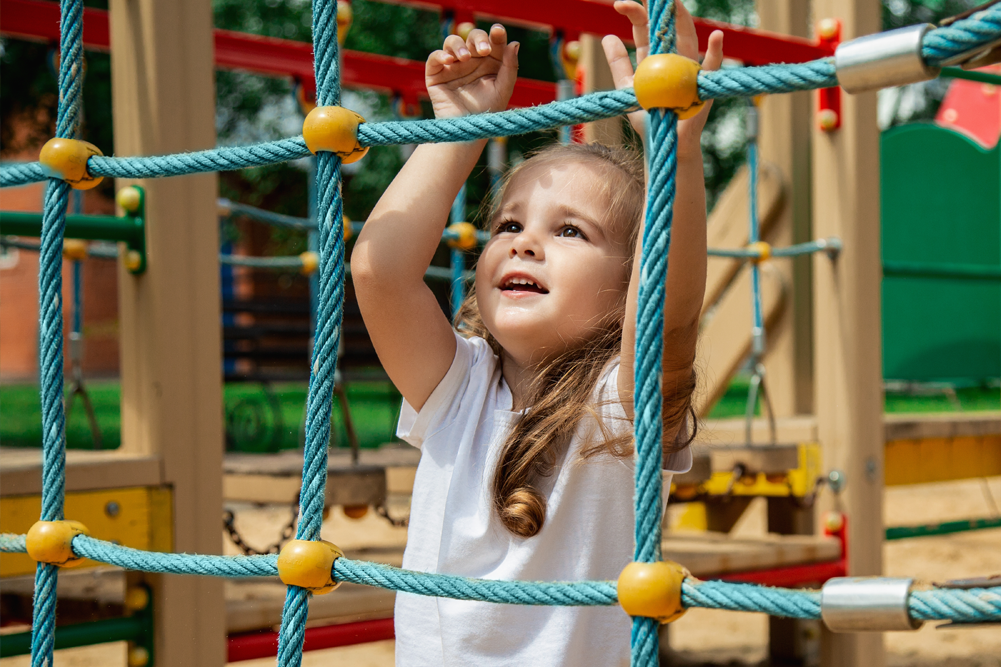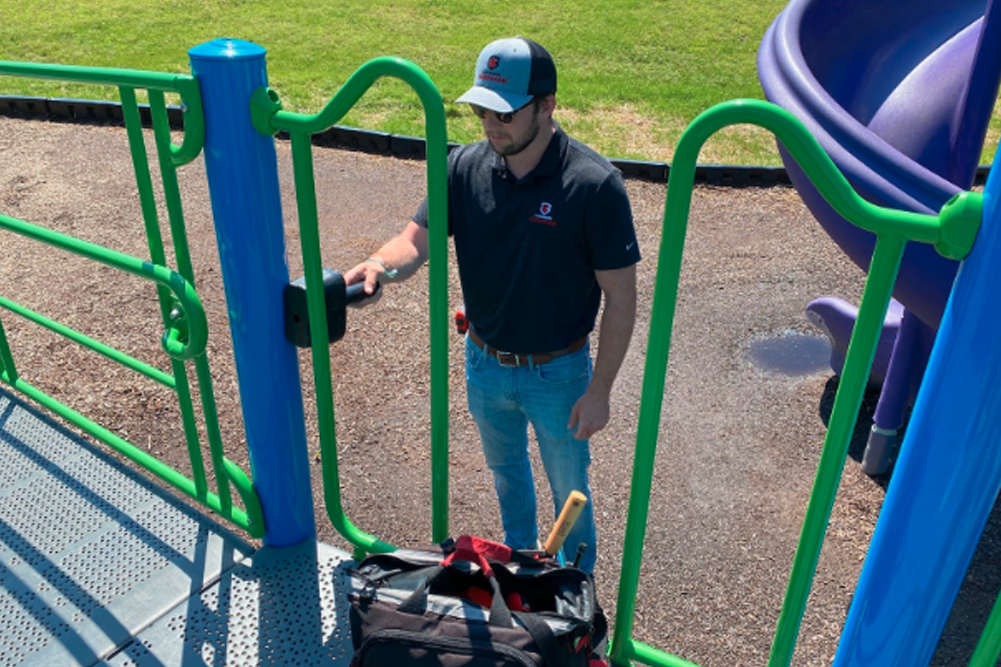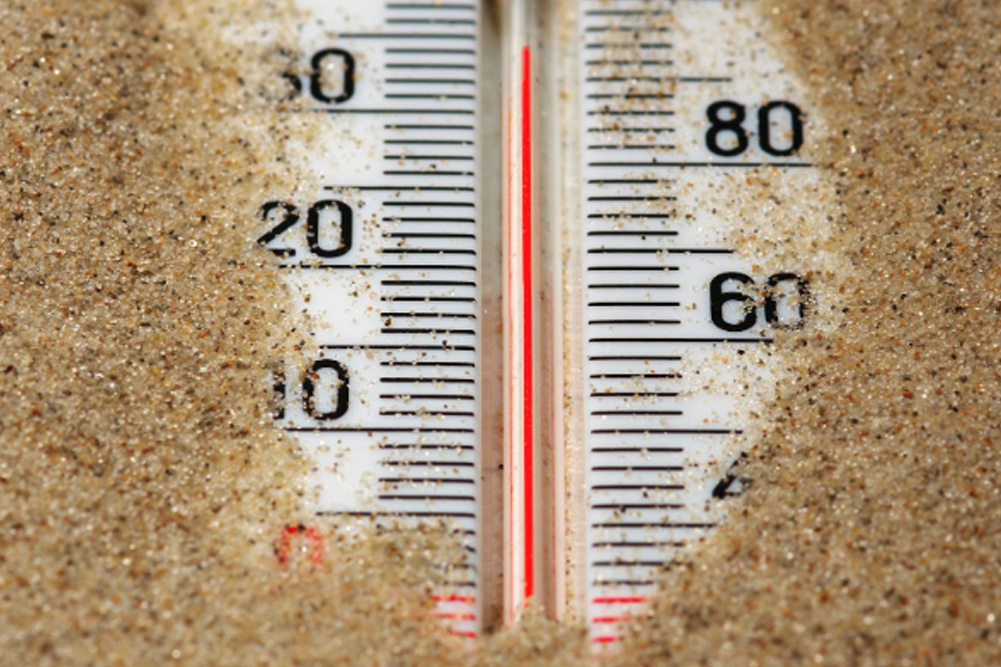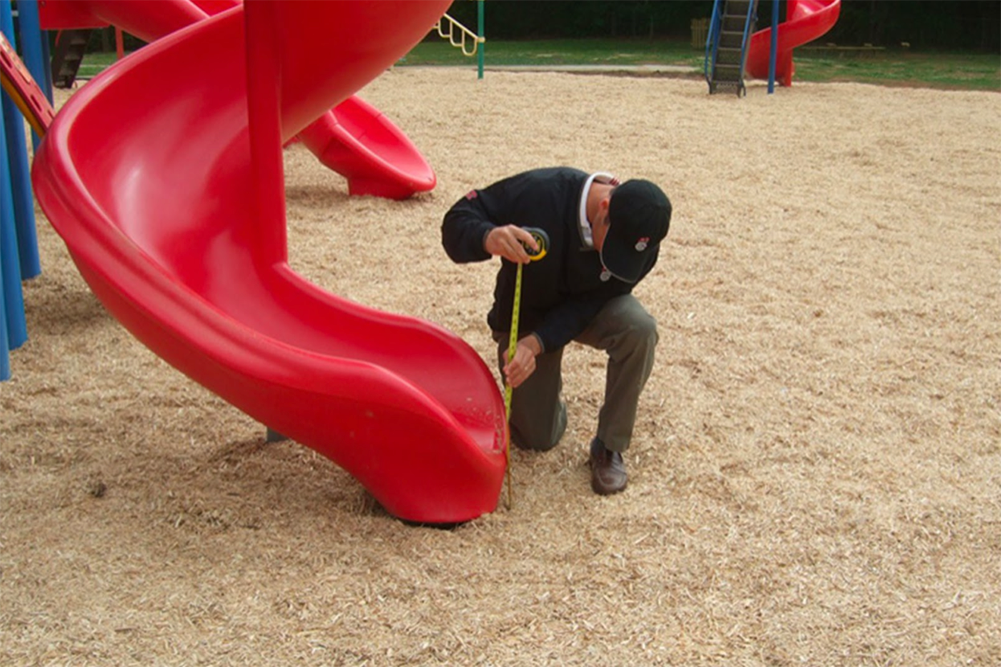Active playground supervision is one of the most overlooked safety factors for outdoor play. However, there are a few simple steps you can take to ensure safe playground supervision and prevent injuries and accidents. Here are eight tips to get you started!
1. Practice Active Playground Supervision
While it may be tempting to sit down, relax, or scroll on your phone, playground supervisors need to be actively engaged in their job. A focused playground supervisor should:
- Stand, not sit
- Move around the playground to monitor from all angles
- Continuously scan the playground with their eyes
- Listen actively
- Avoid distractions like phones and talking to other adults
So many playground accidents could have been avoided with active supervision, which is why it is one of the keys to promoting safe play outdoors.
2. Provide Playground Supervision Training
Offering appropriate playground supervision training ensures that all adults are on the same page about how to prevent playground injuries. During this training, a leader should discuss:
- General playground rules
- Appropriate attire for play (and protocols for those not dressed appropriately)
- The history of injuries on their playground
- Basic visual inspection training (identifying broken elements, loose hardware, etc.)
We also recommend having all playground supervisors trained in CPR and basic emergency first aid.
3. Have an Appropriate Number of Supervisors
Oftentimes, injuries happen on the playground because there simply aren’t enough people available to monitor the children at play.
The National Program for Playground Safety (NPPS) recommends playgrounds operate by the same supervision ratio as classrooms. E.g. if your school district class size maximum is 30 children, there should be one supervising adult for every 30 children on your playground.
Something as simple as setting parameters around the ratio of adults to children is a great way to improve the safety of your playground and prevent injuries.
4. Know the Playground (and the Children at Play)
In addition to receiving general playground supervision training, you’ll also want to get familiar with the playground equipment and the children you’ll be monitoring. Knowing where the most exciting elements on the playground are and where most injuries occur can help you manage your active supervision time most effectively.
You’ll also want to think about the age and ability level of the children you’ll be supervising. Many playgrounds are built for a large age range of children, so there may be certain elements that are not appropriate for your age group that will need extra supervision or restriction. And, if you don’t work with the children every day, spend a little time getting to know their personalities to identify risk takers and those most likely to push safety boundaries.
5. Enable Independent Play
As a playground supervisor, you may be tempted to say things like “be careful” or “watch out.” Unfortunately, these warnings are often quickly forgotten. Instead, we recommend using questions and positive language to encourage independent play.
Some examples include:
- Do you see the children swinging close to where you’re playing?
- Someone may come down the slide quickly near where you’re playing.
- Why might running on the playground be unsafe?
- Do toys belong on the playground?
Asking these questions helps children make their own conclusions about playground safety and improve their behavior more rapidly and more consistently.
6. Devise an Injury Protocol
No matter how hard you try, you will eventually experience an injury on your playground. Whether it’s a minor splinter or a broken bone, adults involved in your playground supervision should be briefed on what to do when an injury occurs.
A potential protocol for a serious injury could be:
- Do not move the child.
- Walkie-talkie or call for assistance from the nurse or emergency services as needed.
- Once help is on the way, instruct the other children to line up outside of the playground area.
- Stay with the child until medical help arrives.
7. Create an Emergency Procedure
Unfortunately, emergencies do happen. While we’ve already discussed the basics of what to do in case of an injury, you should also consider your procedures for other emergencies as part of your playground supervision training.
These may include:
- Natural disaster drills (e.g. earthquakes, tornadoes)
- Fire drills
- Active shooter drills
The procedures for being outside during these emergencies are likely somewhat different from what children may be instructed to do when indoors at a school, daycare, or church. Practicing before disaster strikes is the best way to ensure the best possible outcome for children at play.
8. Document Everything
Once you’ve created injury and emergency protocols, document them and create a cheat sheet for playground supervisors to carry. Emergencies are incredibly stressful, and having a reference sheet can ensure that procedures are followed properly.
If you consistently monitor the same group of children at play, you may also want to create an attendance list in case of emergency, and carry it with your cheat sheet.





